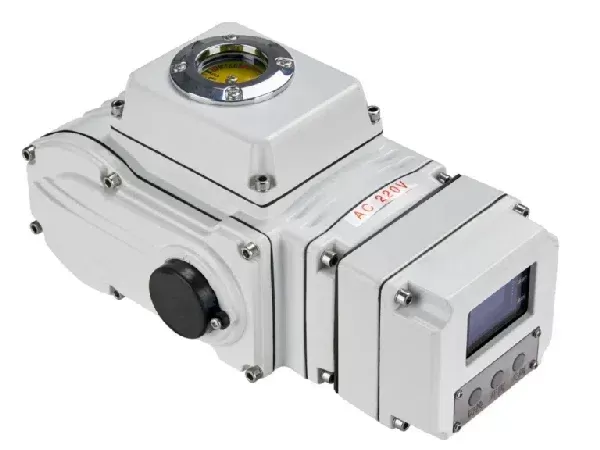Notifications

6 minutes, 26 seconds
-190 Views 0 Comments 0 Likes 0 Reviews

We are a leading control valve manufacturer in China, delivering high-performance valves and control actuators engineered to meet a wide range of industrial applications.
Electric actuators are integral devices used to convert electrical energy into mechanical motion, either linear or rotary. These actuators are crucial for automating operations such as valve or damper control, significantly improving process efficiency and enabling complex tasks. The design of electric actuators varies widely, with different sizes, dimensions, and functionalities tailored to specific applications.
As automation technology continues to decentralize, the demand for electric actuators has risen. Modern process controllers now integrate seamlessly with advanced electric actuators, which makes it easier to comply with evolving automation standards. The inclusion of failsafe mechanisms further enhances safety by ensuring that users can retain control during power outages, boosting the reliability of these devices.
Despite their advanced design and functionality, electric actuators are not immune to failure. Identifying common problems and implementing regular maintenance practices are vital for ensuring the continued performance and longevity of these devices. This article delves into the most common failures of electric actuators and outlines maintenance strategies to mitigate them.
Cause: Overheating due to prolonged use or overload conditions can cause excessive vibration, increase rotor clearance, and ultimately lead to motor failure.
Handling Method: Inspect the motor's power circuit and connections. If damage is beyond repair, the motor should be replaced to restore the actuator’s functionality.
Cause: Power disruptions can occur due to faulty power lines, poor electrical contact, or tripped protection mechanisms, causing operational interruptions.
Handling Method: Troubleshoot by checking for short circuits, open circuits, or loose connections. Clean the contact points and reset any power protection devices.
Cause: Transmission components such as hoses, rods, and fittings are subject to wear and tear, leading to operational failures.
Handling Method: Disassemble the actuator to inspect and repair any damaged or loose parts. Replacing faulty transmission components ensures smooth operation.
Cause: Internal component damage or external vibrations may result in mechanical failure.
Handling Method: Perform a detailed analysis of the system to identify the root cause. Use diagnostic tools to repair or replace damaged components and address vibration-related issues.
Cause: A malfunctioning power indicator light could signal a blown fuse or an issue with the power supply to the servo board.
Handling Method: Inspect the fuse and indicator light. Replace the fuse or light if necessary to resolve the issue.
Cause: Faulty resistors or capacitors can disrupt the actuator's electrical performance.
Handling Method: Test the resistors and capacitors with diagnostic tools. Replace damaged components to restore proper function.
Regularly inspect the actuator's components—motor, transmission parts, and electrical connections—for wear, corrosion, or damage that could lead to failures.
Proper lubrication reduces friction and wear in moving parts. Follow the manufacturer’s recommendations on lubrication intervals and use the specified lubricants.
Maintain cleanliness around the actuator and its components to prevent dust and debris from affecting its operation. Focus on electrical contacts and connectors to prevent performance issues.
Monitor the actuator’s operating temperature to prevent overheating. Ensure that the device is operating within the recommended temperature range.
Periodically test components like resistors, capacitors, and fuses to ensure they function properly. Replace any parts showing signs of deterioration.
Regular calibration ensures that the actuator functions accurately, particularly in high-precision applications. This improves control and positioning.
For actuators equipped with programmable controllers, ensure that the software is up-to-date. Updates often include bug fixes and performance improvements.
Educate operators and maintenance personnel about the actuator’s operation and maintenance requirements. Training helps identify potential issues early and improves response time.
Maintain detailed records of inspections, repairs, and parts replacements. These documents help track recurring issues and inform future maintenance strategies.
Create a contingency plan to manage actuator failures. This plan should include troubleshooting steps, sourcing replacement parts, and minimizing downtime.
Electric actuators are critical for modern automation systems, offering enhanced efficiency, precision, and safety. However, like any mechanical device, they are susceptible to failures that can disrupt operations. By understanding common failures and implementing a robust maintenance routine, users can extend the lifespan and reliability of electric actuators. Regular inspections, lubrication, calibration, electrical testing, and operator training are all essential practices to prevent issues and ensure smooth operation. With proactive maintenance, electric actuators will continue to play a vital role in advancing automation technology.

